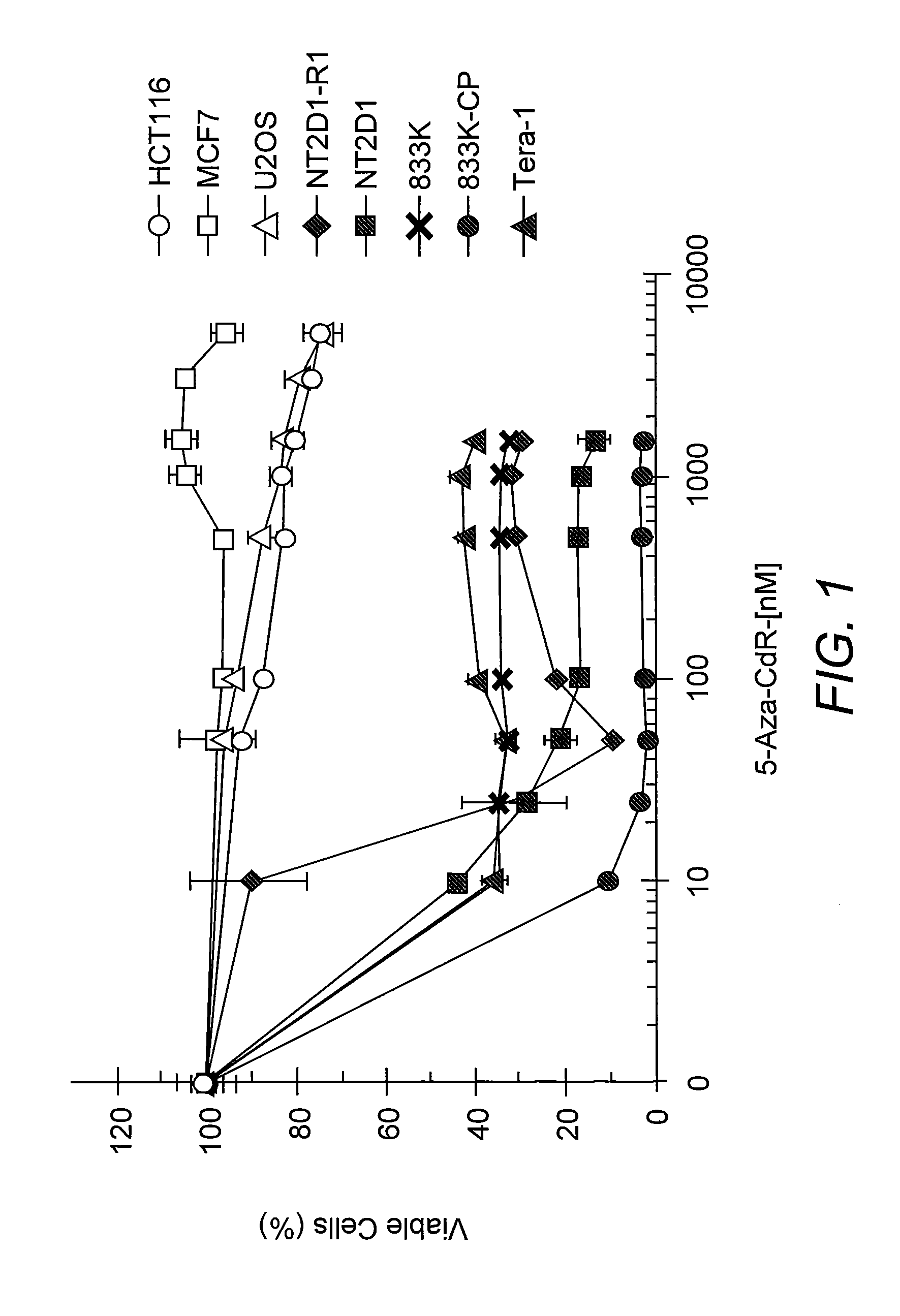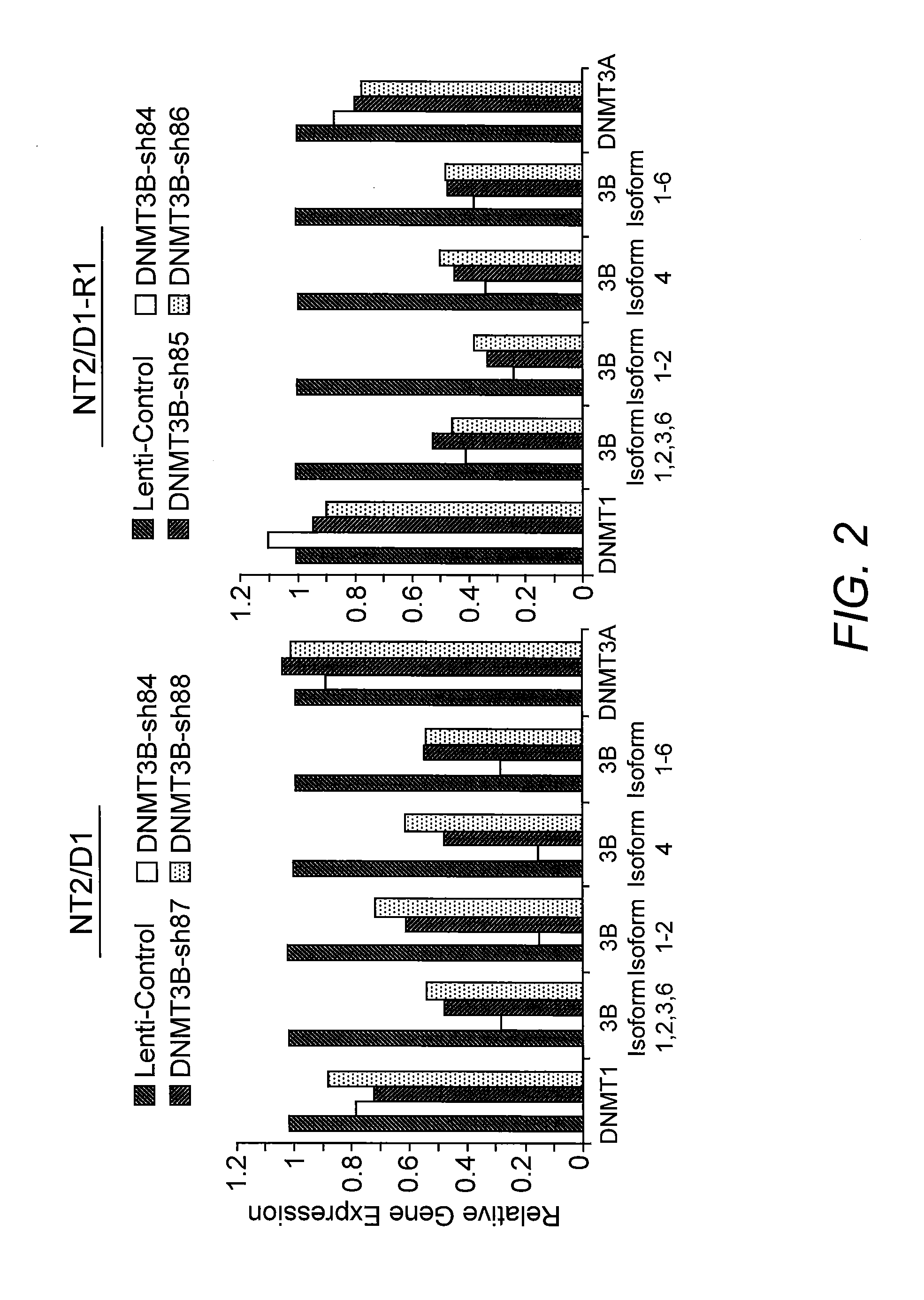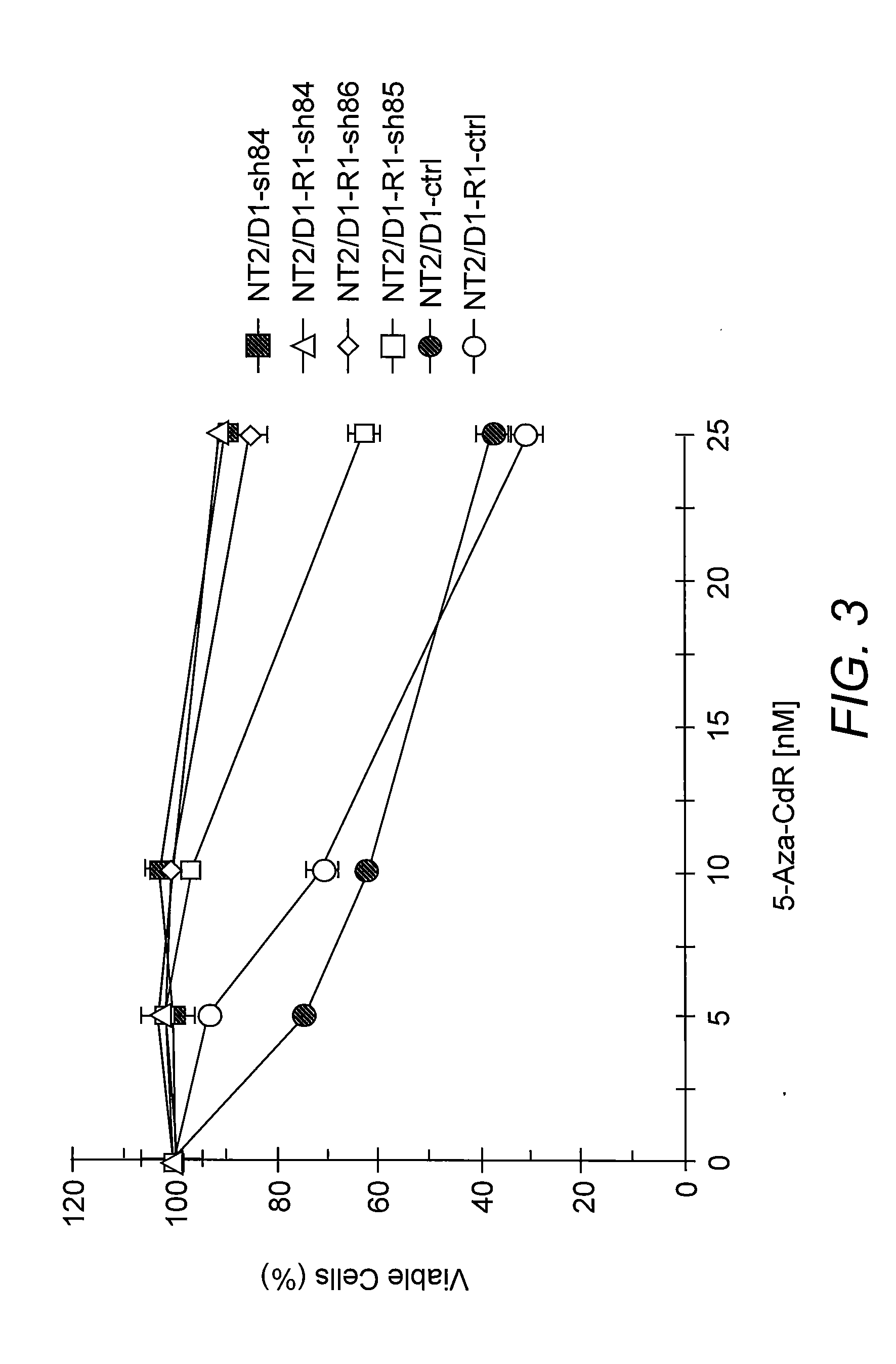Compositions for Inhibiting Growth of Cancer Stem Cells
a technology of stem cells and compositions, applied in the direction of drug compositions, transferases, instruments, etc., can solve the problems of increased incidence of infertility in testicular cancer survivors, poor prognosis, and inability to respond to treatment in initial response to treatment, and achieve the effects of restoring cisplatin sensitivity, restoring cisplatin sensitivity, and restoring cisplatin sensitivity
- Summary
- Abstract
- Description
- Claims
- Application Information
AI Technical Summary
Benefits of technology
Problems solved by technology
Method used
Image
Examples
example 1
Cell Culture and Drug Treatments
[0033]NT2 / D1, NT2D1-R1, 833K, 833K-CP, Tera-1, U20S, and HCT116 cells were cultured in DMEM with 10% FBS supplemented with glutamine and antibiotics except for MCF7 cells that were cultured in F12-DMEM. The derivation of the NT2 / D1-resistant NT2 / D1-R1 cell line has been previously described (Curtin et al. 2001. Oncogene 20:2559-2569; Kerley-Hamilton et al. 2007. Biochim. Biophys. Acta 1769:209-219). Cells were treated with the indicated dosages of 5-azadeoxycytidine (5-aza-CdR) for 3 days. This drug was replenished each day. Cisplatin (Bristol Laboratories) treatments were performed at the concentrations and time points indicated. To assess cell proliferation and survival, Cell-Titre Glo (Promega) assays were performed.
example 2
Real-time PCR and Western Blot Analysis
[0034]Reverse transcription (RT) was performed on 1 μg RNA using the Taqman RT kit (Applied Biosystems). Twenty ng of the resulting cDNA was used with SYBR green (Applied Biosystems) for quantitative real-time PCR assays utilizing the ddCT method normalized to GAPDH and the ABI Prism Sequence Detection System 7700. For Western analysis, cells were lysed in a radioimmune precipitation buffer, separated by SDS-PAGE, as previously described (8, 9). Antibodies to DNMT3B (H-230; sc-20704, Santa Cruz, and Ab2851, Abcam) and actin (C-1; sc01615, Santa Cruz) were employed.
example 3
Lentiviral Production
[0035]Silencing shRNAs to human DNMT3B were purchased (Open Biosystems). Lentiviral particles were generated as previously described and cells were selected in 1.0 μg / ml puromycin (Sigma Chemical Company, St. Louis, Mo.) (Kerley-Hamilton et al. 2007. Biochim. Biophys. Acta 1769:209-219).
PUM
| Property | Measurement | Unit |
|---|---|---|
| resistance | aaaaa | aaaaa |
| SEM | aaaaa | aaaaa |
| reversing resistance | aaaaa | aaaaa |
Abstract
Description
Claims
Application Information
 Login to View More
Login to View More - R&D
- Intellectual Property
- Life Sciences
- Materials
- Tech Scout
- Unparalleled Data Quality
- Higher Quality Content
- 60% Fewer Hallucinations
Browse by: Latest US Patents, China's latest patents, Technical Efficacy Thesaurus, Application Domain, Technology Topic, Popular Technical Reports.
© 2025 PatSnap. All rights reserved.Legal|Privacy policy|Modern Slavery Act Transparency Statement|Sitemap|About US| Contact US: help@patsnap.com



